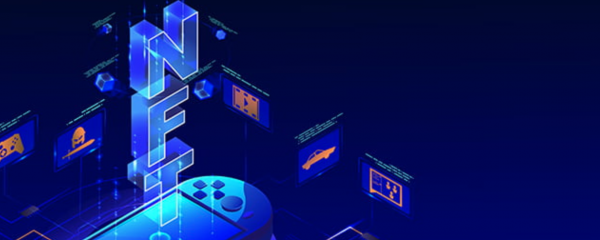NFTs in Online Gaming: The Good, the Bad and the Ugly
The idea of having some sort of collectible as part of a game is nothing new, writes Jerry Chan of CoinGeek.
Think collectible baseball cards, Pokemon and Magic the Gathering collectible card games.
Collectible card games in Japan have already gone digital.
These physical cards contain QR codes or NFC chips that allow for integration into arcade machines so that players can keep their own unique set of players in a game.
Chan explains further:
Long before NFTs were busy creating digital versions of physical assets (usually to make them more easily transferable), Japan has had the inverse NFT, or physical versions of digital game assets. These allow for customization of game experience to the players, depending on the players’ assets. This is, of course, required on game platforms like public arcades, which lack login or player accounts and where there is no ability to store personal user information. Therefore, physical cards act as a simple way of holding state—namely, the state of the cards that you happen to have in your possession.
So, what do NFTs of the current trend have to offer? What is the appeal of having a digital version of an already virtual asset? These are good questions. There are basically two benefits to using NFTs in a game. Firstly it allows for more play-to-earn models to be realized, and secondly, it allows for potential persistence of virtual assets beyond the scope of the originating game itself. Let’s explore the first aspect a little more in detail.
Traditionally, the gaming formats were based on free-to-play, play-to-win and pay-to-play models where the purchased items and paid upgrades in the game offered no real-economic return, writes Ravindra Kumar of Business Today India.
Though play-to-earn gaming models are new to the digital gaming space, they rely on the success of NFT trading and its demand as digital assets. It works as a win-win for gaming developers to get more players, on the other hand, new players can start earning themselves.
It's hard to imagine that these seemingly inoculous game cards could be considered so toxic in the gaming community.
Thomas Whitehead of Nintendo Life explains:
You don't need to look far online to find passionate arguments for and against NFTs, though such is the fervour of the debate that at times it can feel like facts and realities get set aside. For example, arguments against often cite environmental factors and cryptocurrency issues, which aren't necessarily applicable to all NFTs. On the other side, some defending the concept blithely disregard all genuine issues. Overall, it's rarely a civil or calm debate.
Basically, the technology behind these NFTs is "power-hungry and environmentally damaging," according to Whithead.
Michael Yum, founder and CEO of PM Studios with extensive business experience in blockchain technology, tells Whitehead that the power consumption goes far beyond just NFTs.
"Truthfully all network based games whether its blockchain or not have a huge environmental impact. When you interact on the internet, you are consuming energy. Its plain and simple. However, ‘proof of stake’ does reduce the energy consumption because it requires less data transaction points and it is a very big step forward from what is currently happening with Ethereum and ‘proof of work’."
One-time game journalist and Pure Xbox editor, Ken Barnes, distinqished between 'proof of stake' and 'proof of work'
"The environmental impact is a huge concern for proof of work chains such as Bitcoin and Ethereum. Proof of stake uses many magnitudes less energy, mainly due to there being no mining requirement."
Chan points out too that, besides their use as virtual ‘beanie babies,’ NFTs games typically also include an in-game currency to add some control over its internal economy and makes them quite appealing. But he warns that many NFT-based games fall prone to the complications that come with creating a token economy inside their games.
There are a number of ways to generate cash flow through NFT gaming. This includes selling in-game tokens (currency or assets) before the game actually launches as a way to raise funds to build the game itself, issuing a governance token to the public markets and allowing for the public trading of it to generate a value to the price of the game commodity, and finally through the selling of in-game currency for fiat.
The later is the most tried and true but it can also be traceable in secondary markets, Chan warns.
He writes:
NFTs are built to allow for outside and independent trading of assets, potentially outside of the issuer’s control. This greatly disturbs the economy in the game, as it allows people to ‘pay-to-win1‘. Allowing outside purchasing of a game token allows people to do better in the game the more money they pay into the game. While this is good for the gaming company, it is long-term detrimental to the gaming economy. It makes it not very fun for newcomers and unbalances the game.
- Aaron Goldstein, Gambling911.com














